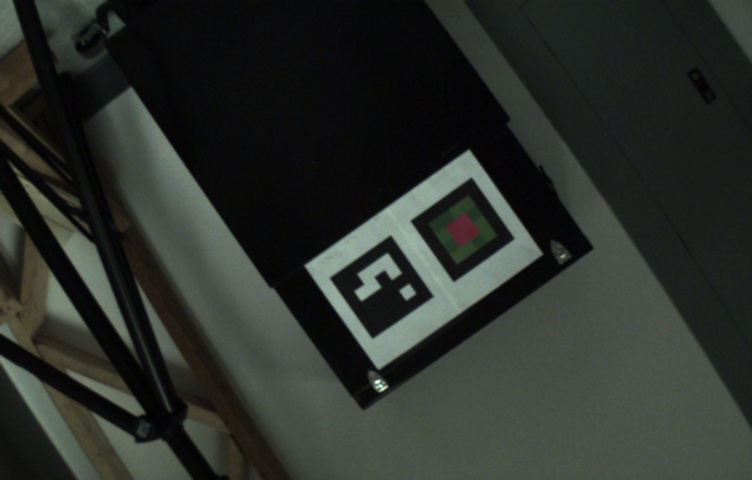ChromaTag: A Colored Marker and Fast Detection AlgorithmJoseph DeGol, Timothy Bretl, Derek Hoiem2017 IEEE International Conference on Computer Vision (ICCV '17) |
||||||||

|
|
ABSTRACT |
||
|---|---|---|
|
Current fiducial marker detection algorithms rely on marker IDs for false positive rejection. Time is wasted on potential detections that will eventually be rejected as false positives. We introduce ChromaTag, a fiducial marker and detection algorithm designed to use opponent colors to limit and quickly reject initial false detections and gray scale for precise localization. Through experiments, we show that ChromaTag is significantly faster than current fiducial markers while achieving similar or better detection accuracy. We also show how tag size and viewing direction effect detection accuracy. Our contribution is significant because fiducial markers are often used in real-time applications (e.g. marker assisted robot navigation) where heavy computation is required by other parts of the system. |
VIDEOS |
||||||||||||
|---|---|---|---|---|---|---|---|---|---|---|---|---|
|
Two videos are provided below. The first video is a compilation of the data used for development of ChromaTag. This video includes a cpu usage meter demonstrating that ChromaTag requires less than 5% of one core of a cpu for detection in a 752x480 image. This is significantly faster than the average cpu usage of other tags. The second video is a compilation of the data used for evaluation in the ICCV paper. This data highlights the successes and failures of ChromaTag and the other tags. For example, ChromaTag does not work well when the camera is far from the tag and AprilTag 16H5 has many false positives. This video also includes a cpu usage meter demonstrating that ChromaTag requires significantly less cpu compared to the other tags. Links to download the videos are provided.
|
CHROMTAGS |
||||||||||||||
|---|---|---|---|---|---|---|---|---|---|---|---|---|---|---|
|
ChromaTags are based on the tag families created by Edwin Olson for AprilTag. An example AprilTag from the 16H5 family is shown below in (1). The grid spaces are white or black to embed a binary code (2). For ChromaTag, we reassign the 4 inner squares to two shades of red and the outer grid squares to two shades of green (3). This results in a ChromaTag (4).
For this paper, we used the 16H5 family to create ChromaTags. These tags can be downloaded below. The tags are 800x800 pixels in size. Note that the color of the downloaded tags look different than those on this website. This is because the colors of the tags were optimized for printing with a generic home printer. When printed, the colors should look like those shown in the paper.
|
SOURCE CODE |
||||||||||||
|---|---|---|---|---|---|---|---|---|---|---|---|---|
|
ChromaTag is released under the MIT license. Please consider citing ChromaTag if you use it. If you are using ChromaTag for commercial purposes, we would love to know about it! Please email us and tell us who you are and what you are using it for.
Development Release on Github:
Paper Release:
Click (1) the download icon above to download the code and starter data. Next, unzip (2) the downloaded file and navigate inside. Read (3) the README.md file for details on building dependencies and ChromaTag. Build (4) ChromaTag using cmake. Run (5) ChromaTag on the starter data using Run_ChromaTag.sh. |
DATA |
||||||||||||
|---|---|---|---|---|---|---|---|---|---|---|---|---|
|
Development Data:
|
BIBTEX |
||
|---|---|---|
@inproceedings{DeGol:ICCV:17,
author = {Joseph DeGol and Timothy Bretl and Derek Hoiem},
title = {ChromaTag: A Colored Marker and Fast Detection Algorithm},
booktitle = {ICCV},
year = {2017}
}
|








